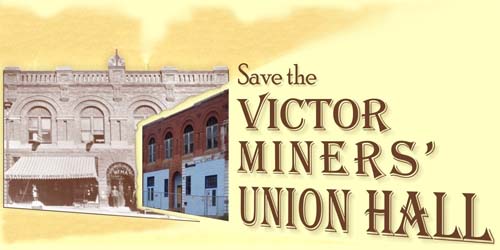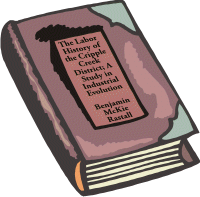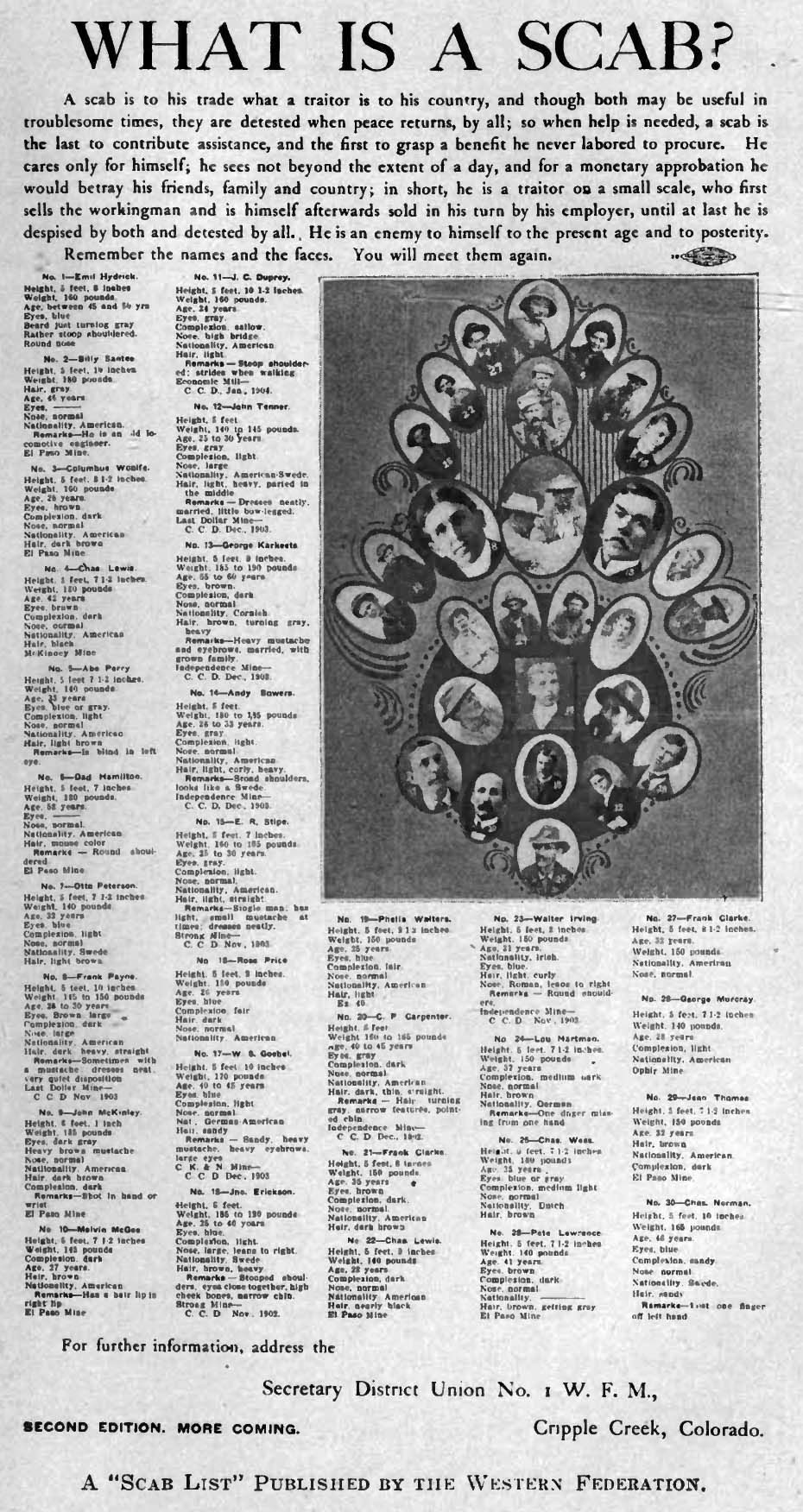 |
Victor
|
The Labor History of the Cripple Creek District;
A Study in Industrial Evolution
by Benjamin McKie Rastall

pages 149-152
The Responsibility And Blame;—The Western Federation OF Miners
For the opening of the Cripple Creek strike the Western Federation of Miners must take the whole responsibility.25 Whatever may have been the reasonable complaints as to the eight-hour day in Colorado as a whole, and as to the right to form unions and to adjust wages, at Colorado City, these things had no direct connection with Cripple Creek.26 Admittedly the conditions were absolutely satisfactory, and the only excuse for the strike was the refusal of certain mines to cease shipping ore to the Colorado City plant.27 When it is remembered that most of the mines were not shipping to the reduction company at all;28 that those which refused were bound by contracts;29 and that the strike on the reduction company represented a sum total of nine men out, the strike stands in its true light.30
A "SCAB LIST" PUBLISHED BY THE WESTERN FEDERATION
The result was simply what might have been expected, with determined and powerful men on the other side. The Federation pulled the avalanche down upon its own head. By its constant partisan action, and the conscienceless use of its power before the strike, it paved the way for an unrestrained reaction. And while nothing said here must be taken as condoning lawlessness committed by any person whomsoever, so far as the Federation itself is concerned, it may blame itself for the disastrous result. The unions reaped only what they had sown.
Concerning the crimes committed during the latter part of the strike so little evidence has been adduced, that judgment must, for the present, be suspended. Especially is this true since, at the time the outrages were committed, the district was completely in the hands of those who sought in every possible way to fasten the guilt upon the unions, but who exhausted their means and ingenuity without result.31 The general circumstantial evidence can be adduced, but nothing further.
The people of the mining area in general, who have lived with the Federation, and known its history, have little hesitation in laying the criminal acts connected with the strike at the door of that organization. Nor will they change their opinion unless strong evidence is shown to the contrary. During the strike of 1894 a reign of terror was brought about by men of criminal character, many of whom were admitted to the unions.32 Non-union men were severely beaten,33 and the Strong mine was blown up.34 Between the strikes non-union men were beaten, and in one case at least a non-union man was shot, and the perpetrators protected from just punishment by union juries.35 In the strike of 1903 men were assaulted and property was destroyed;36 there was such a condition for a time that men opposed to unions felt it unsafe to be out after dark; shots were fired through the shaft houses of mines;37 and threats were made to non-union men and militiamen, of which the Vindicator explosion, the attempted train wrecking, and the Independence horror would have been only a partial fulfillment.38
In Victor union hall on the day of the Victor riots, a number of photographs of mine groups were found. Over the picture of each non-union man a number was placed, and on the back the names were written with the corresponding numbers. Prom the names on the back of the Vindicator Mine group two had been scratched out, the names of Charles H. McCormick and Melvin Beck, who had been killed in the descending cage at the mine. The mine owners took this as evidence of an assassination plot, but the union officials explained that the pictures were simply for the making up of "scab lists" that had been published at frequent intervals.39 In the raids by militia and deputies that followed, at one place a number of "Winchesters and 300 rounds of ammunition were discovered.40 Under the cabin of one of the Altman union officials was found a quantity of high explosives, spools of wire, and electric batteries.41 Ellsworth W. Holden, a machinist member of the Federation, testified that at the time of the Colorado City strike Federation officers tried to induce him to go to Colorado City, and gaining employment as a non-union man, to wreck the machinery of the Colorado Reduction and Refining Company.42 No one would think for a moment of accusing the rank and file of the Western Federation of such outrages as marked the last stages of the strike. But there were certainly members of the organization who would not hesitate to commit crime to accomplish their ends. There were certain officers who were willing to countenance and even to instigate the beating of men, and the destruction of property. Would they not wink at the commission of graver crimes?
25See pp. 83, 84.
26See p. 18, Including footnote, p. 88, f. n. 5. pp. 88 and 89. especially footnotes p. 89.
27Ibid.
28See pp. 82 and 83.
29See p. 82.
30See p. 88.
31pp. 104, 108, 129, Chap. V. entire and Chap. VI. Section on trials.
32Part I, p. 30, including f. n. 3.
33Part I, p. 31.
34Part I, p. 33.
35See p. 70.
36See pp. 92 and 93.
37Testimony of a number of non-union men and mine guards.
38From many statements by militiamen and non-union men.
39See illustration opposite p. 150.
40Report Adjutant General, 1903-04. Also testimony before Coroner's Jury in Victor Riots.
41This find was credited to K. C. Sterling, a detective in the employ of the Mine Owners' Association. Sterling does not enjoy a good reputation and the miners made various charges against him. See connection with train wrecking cases, pp. 55, 56 and 57. See also Cripple Creek Times, June 8 and 9, 1904.
42Testimony before the military commission verified by the author.
NEXT: Criminal guards — Mob violence
